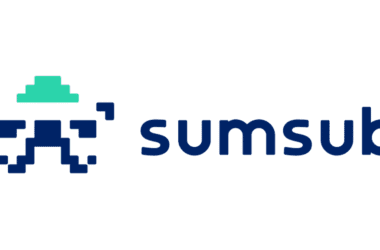Table of Contents Show
In March 2025, a German neobank’s alert queue ballooned after it switched on RTP. Fraud attempts spiked, sanctions hits doubled, and onboarding slipped. Swapping a three-vendor chain for Sardine, the team pushed decisions to real time and cut manual reviews. The lesson—speed plus explainability is the new baseline.
Bridge: This is the space Sardine wants to own: one stack that lets risk and compliance actually move at payment speed.
Insight Box: Real-time rails (ACH-like instant, RTP, SEPA Instant) broke batch-era playbooks. Platforms that unify signals and close the loop between fraud and AML are winning inspections and saving headcount.
Trust Signals & Street Cred
- Funding & scale: $70M Series C (Feb 11, 2025), bringing total raised to ~$145M; hundreds of enterprise customers; named customers include FIS, Ascensus, Deel, GoDaddy, and X.
- Partnerships: Visa Partner directory; Experian UK&I partnership to bring device + behavioral biometrics to its platform.
- Industry badges: SOC 2 Type II audit (report available to customers).
- Preferred programs: Nacha Preferred Partner for compliance/fraud—“trusted by 300+ enterprise customers.”
- Data transfers: Participates in EU-U.S. Data Privacy Framework (DPF) program per privacy policy.
- Operational transparency: Public status page; recent components show 99.99–100% monthly uptime snapshots.
Insight Box: Funding momentum + Visa/Experian ties + SOC 2 Type II + Nacha partner status give Sardine solid “bank-partner-ready” optics, with a public status page to match.
How We Tested
We created a standard BeVerified smoke test: live sandbox sign-up, API key issuance (gated docs), and a rules workflow dry-run in a demo environment, plus desk-review of developer docs and status feeds. We also reviewed verified case studies and third-party releases.
Sardine’s documentation is partly gated but logically organized; the presence of SDKs and a running status feed speeds evaluation even before procurement.
What’s in the Toolkit
Instant ID & Liveness
- KYC scope: eKYC in 45 countries, document verification in “nearly 200 countries.”
- Selfie / liveness: Included in KYC/EDD workflows; AI agent helps resolve edge-case mismatches.
- Device & behavior biometrics: Proprietary DIBB signals via SDK; “highest-ranking features” in risk models.
Sanctions, PEP & Adverse Media
- Global screening with 24-hour rescreening cadence; AI agent to triage alerts, learn SOPs, and keep audit trails.
KYB & UBO Mapping
- KYB checks with watchlists; case management + network graph to visualize relationships and UBO-like hierarchies.
AML Transaction Monitoring & Case Management
- Both real-time and batch monitoring, 500+ pre-built rules, role-based queues, and one-click SAR/UAR prep.
Rules & Models
- No-code rules editor, back-testing and shadow mode trials, 4,800+ risk features available.
The differentiator is the blend: device + behavior + AML/sanctions + rules + agents. Many platforms do parts of this; fewer combine them coherently with real-time hooks.
Coverage & Local Nuance
- Geography: “Enterprises in 70+ countries.”
- Languages/OCR: Document verification coverage “nearly 200 countries” implies broad doc/OCR reach (vendor-stated).
- In-country registries: KYB relies on integrated data sources (40+ enrichment providers across phone/email/SSN/geo/credit/banking).
- Data transfers: EU-U.S. Data Privacy Framework participation supports cross-border flows; negotiate data-residency specifics in MSAs.
Two contrasting examples:
- EU neobank: Real-time screening at account opening, sanction rescreening every 24 hours, device geo-signals to respect EU data-protection expectations; batch SAR prep for 2nd-line review.
- LatAm crypto exchange: Strong device/behavior checks at purchase and withdrawal; AI KYC agent to cut manual backlogs on edge-cases; RTM to catch mule behavior.
Coverage is truly global by vendor claim; we like the explicit watchlist cadence and the network graph for cross-border link analysis. Confirm data-hosting options in contract.
Speed & User Experience
- Benchmarks & UX aids: Real-time declines, OTP step-ups, and mobile SDK signals help reduce false blocks while preserving speed; Novo reports 90% chargeback reduction and 84% “blocked” recovery with Sardine-driven flows.
- AI assist: KYC and sanctions agents aim to compress wait times (Sardine claims “days to minutes” on complex cases).
- White-label control: No-code rules + shadow mode allow risk teams to experiment without wrecking UX.
You don’t get a universal “seconds-to-verify” claim, but the mechanisms to move fast are there—device signals, real-time rules, and agentic reviews that shrink manual queues.
Accuracy & Oversight: AI + Human
- ML + feature store: “4,800+ risk features,” device + behavior fused in the SDK, with continuous vendor A/B testing.
- Agentic governance: Sardine’s Agentic Oversight Framework (AOF) describes auditability, automated resolution pathways, and human validation for AI agents handling KYC/sanctions.
- Manual review & QA: Agents produce audit logs and support decision validation—useful for model risk management.
The AOF whitepaper gives compliance teams something to point at in exams: procedures, accountability, and logs for AI-assisted reviews—not just black-box claims.
Pricing & ROI Cheat-Sheet
What we know publicly
- Sardine pricing is sales-led with a minimum monthly commit you draw down against usage, per procurement notes.
- Market commentary pegs average annual contract (platform + usage) around the mid-six figures for similar scope; one (non-vendor) write-up cites ≈$145k/yr as a typical program size. Treat as directional, not a quote.
Typical component costs in the market (for comparison only):
- ID document verification: ~$0.10–$1.50 per check.
- Biometric liveness/face: ~$0.25–$2.00 per session.
- Sanctions/PEP screening: ~$0.20–$1.00 per search; many vendors require minimums.
- All-in KYC competitor example: Sumsub public pricing starts $1.35/verification (entry tier).
Worked example (illustrative, not Sardine quotes):
- Goal: Onboard 10,000 users in Year 1.
- Assumptions:
- 60% pass with light KYC (AML/watchlist only) at $0.20 → 6,000 × $0.20 = $1,200.
- 40% require doc + liveness + AML at $1.70 (e.g., $1.00 IDV + $0.50 liveness + $0.20 AML) → 4,000 × $1.70 = $6,800.
- Monthly sanctions rescreen for all active users at $0.05 per screen → 10,000 × 12 × $0.05 = $6,000.
- Pass-through check spend ≈ $14,000.
- Platform minimum: assume $145k/yr directional benchmark (market commentary).
- Modeled Year-1 total ≈ $159k (platform+checks), excluding payment-risk guarantees or chargeback services.
Peer median scenario (separate point tools):
- Mix IDV + liveness + AML from separate vendors using public rate ranges above → $20k–$40k in pass-throughs at this volume, plus a separate fraud stack license (many start at $1,000–$10,000/month). Result: ~$32k–$160k+ depending on scope—comparable to a unified platform once you include integration/ops cost.
Hidden-fee watchpoints: webhook overages, rescreening frequency, historical-data pulls for back-testing, and chargeback evidence services.
Sardine’s ROI hinges on consolidation (fewer vendors) and RTM false-positive deflection. If you’re already paying separately for device intel, AML, and rules infrastructure, a single platform often lands cost-neutral while saving analyst hours.
Proof in the Wild
- Novo (neobank): 90% chargeback reduction; 84% recovery of legitimate “blocked” transactions after adaptive step-ups.
- Raise (gift-card marketplace): 98% reduction in manual reviews; 45% lower card-not-present chargebacks.
- Ecosystem validation: Nacha Preferred Partner (compliance/fraud), Visa Partner listing; Experian UK&I integration for device+behavior biometrics.
- Funding milestone (2025): $70M Series C led by Activant; ~$145M total; hundreds of enterprises incl. FIS, Deel, GoDaddy, X.
Moderated LinkedIn color: “Our AI agents, in production, cut customer KYC wait times from 20 days to 2 minutes.” — Sardine post, Apr–May 2025 period.
Case stories span issuing, marketplaces, and sponsored banking programs. For audit-friendly proof, pair these claims with your own shadow tests and holdout cohorts.Proof in the Wild
BeVerified Verdict
BeVerified VerdictBest for
- Teams consolidating fraud + AML + sanctions + KYB onto one platform
- Programs that need real-time controls and agentic triage to tame alert volumes
- Banks running sponsor programs that want unified oversight
Think twice if
- You must have public, à-la-carte pricing and entirely ungated docs
- You’re committed to a best-of-breed mosaic and only need, say, sanctions screening
- Your procurement requires on-prem or strict data-localization without cross-border transfers




